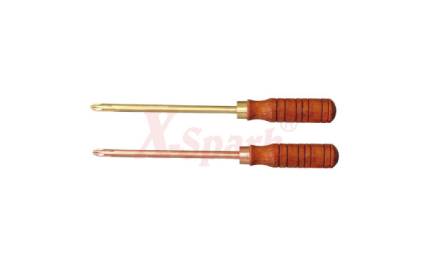Non sparking safety tools, also known as safety tools, are mainly used inflammable and explosive places. The friction between the tool and the work object does not produce sparks when impacted and effectively prevents flammable explosions. Explosion-proof tools are irreplaceable safety tools inflammable and explosive places. They do not produce sparks due to friction and impact. They also have safe mechanical properties, good hardness, and torque, and do not deform during use, which is in line with its use-value.
Why use explosion-proof tools in special fields?
As early as thirty years ago, in China’s petroleum, chemical, oil refining, oil and gas transportation, and other flammable and explosive places, accidents caused by tool friction and impact generated sparks to explode explosive gases, resulting in a serious loss of national property and personal safety. Guarantee. In order to ensure personal safety and the protection of national property from loss, it was necessary to use very expensive foreign exchange imported explosion-proof tools. Tests, friction experiments do not appear sparks, do not detonate gas, called explosion-proof materials, the chemical composition of the material impurities exceed 0.05%, impurities will produce impact sparks, will detonate the gas, such tools are not called explosion-proof tools, called copper tool.

Non Sparking Safety Tools
What kind of tools are safe?
The safe explosion-proof tools leave the factory corresponding to the test report issued by the state. The manufacturer, trademark, material, explosion-proof grade, and the certificate of conformity must be marked on each tool. (Qualification certificate without material report should not be used)
What is the difference between explosion-proof tools and copper alloy tools?
Copper alloy tools cannot be regarded as explosion-proof tools. There are hundreds of specifications of copper alloys on the domestic market. As long as it is copper (electrolytic copper) combined with any metal, it is called a copper alloy. At present, the material of explosion-proof tools is only beryllium bronze alloy. The two materials, aluminum bronze and aluminum alloy, are recognized by the market, and also meet the performance, hardness, torque and mechanical strength of explosion-proof tools. In particular, copper alloys without material reports are actually scrapped copper purchased from the market, collectively referred to as miscellaneous copper (copper alloys). This material has high impurities, is prone to sparks, has no hardness, and has no torque. It is manufactured by the traditional sand casting process. The surface is rough, there are pores, trachoma, shrinkage, and it is easy to bend and break when used. This is a kind of fake and shoddy product. (It is well known that the occurrence of sparks is caused by impurities, and miscellaneous copper contains very high impurity components, so it is not called a qualified explosion-proof tool)
评论
发表评论